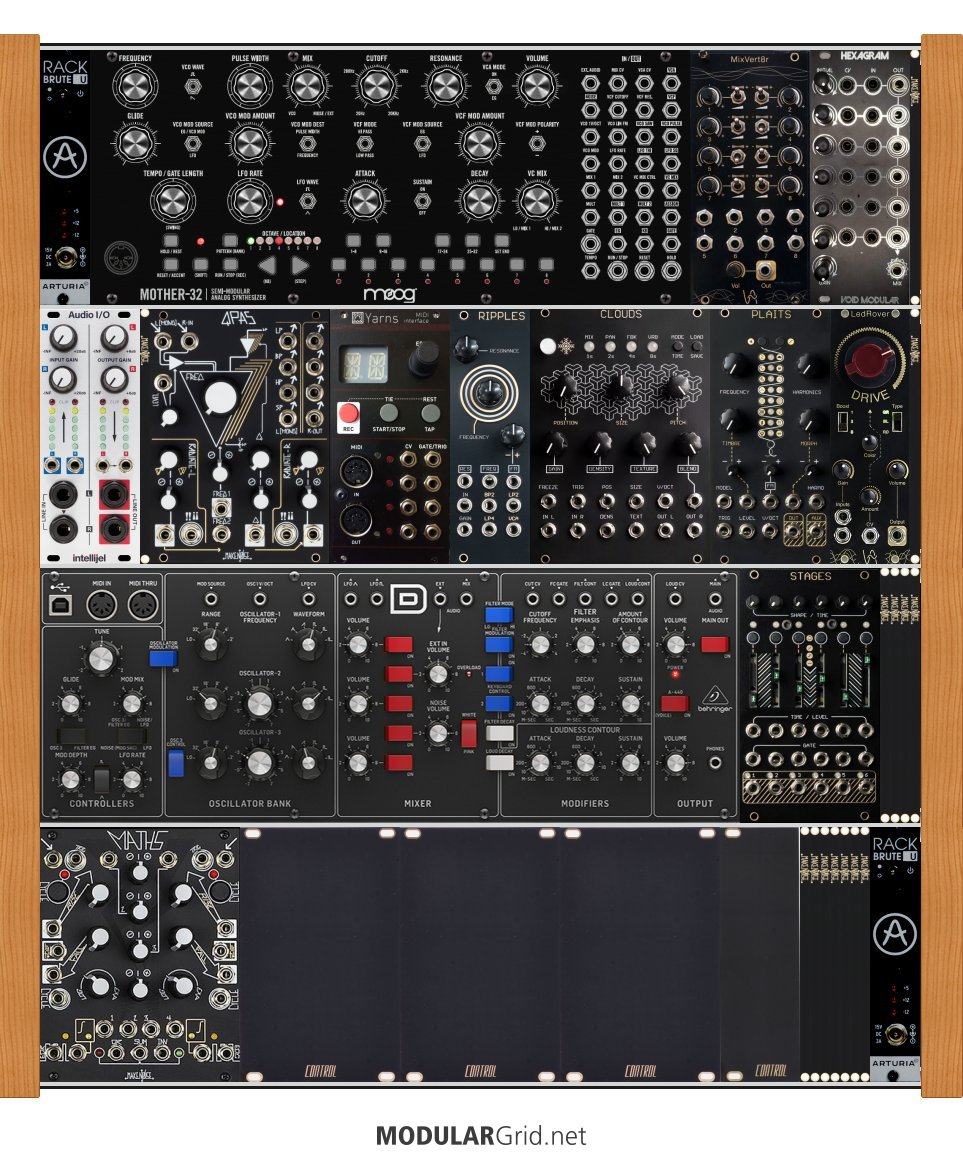Hello amazing humans who are no doubt lightyears ahead of me in the world of modular synthesis. Here, I submit my first Eurorack for your consideration. I hope to learn if I've missed anything spectacularly necessary or overlooked something glaringly obvious in the setup. I'm also eager to learn which modules you might recommend as a natural next step. Your advice, suggestions, guidance (even disapproval) would be endlessly helpful and very welcome. Regarding the intended use... I've lived in the word of sampled orchestral libraries and fully loaded synths for years. I compose orchestral pieces with electronic flourishes. Stylistically, I trend toward overly romantic string passages mixed with somewhat dark electronic elements. For example, I love the deep space romanticism of a morse code S-O-S repeating off into a whirling expanse, thick electronic FWWWWAPs to anchor strings and regimented bleeps and beeps that sound as if they've come from the real-time operation of a spaceship. My interest in modular is both sculpting new less common, less familiar sounds, creating drones that I can use as a layer mixed into my current work, as well as feeding in some raw audio in order to twist it out of all recognition. Anyhoo. That's me. This is what I have so far and I'm excited to snatch up some of your wisdom!


